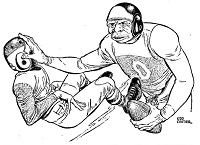Plot summary
Football scout Oliver Grogan is looking for recruits for the Chicago Wolves, but his efforts are unsuccessful. Accepting an invitation from Professor Frybus to visit a reservation for Gigantanths, he sees possibilities. The Gigantanths are the result of a multi-generational back-breeding experiment to recover prehistoric genetic traits. The result has been a race of giants of limited intelligence, who have had to be segregated for their own protection.
Encountering an exceptionally bright giant named George Ethelbert, Grogan pitches him to consider a football career. The massive, nine-foot tall George would prefer to be an artist, so Grogan dangles the lure of paying for his art lessons. The giant agrees, and is spirited off to Chicago for training. George takes naturally to the game, and in his first game is easily taking out the rival Dallas Wildcats until they call foul and refuse to play. In response, the football league bans Gigantanths from the game.
Grogan, broke and ruined, tries to renege on his agreement with George, only to find the giant cannier than he seems, and with a lawyer to back him. Stymied, Grogan attempts to skip town with team funds, forcing his former protege to enforce their deal in a more physical fashion.

Lyon Sprague de Camp, better known as L. Sprague de Camp, was an American writer of science fiction, fantasy and non-fiction. In a career spanning 60 years, he wrote over 100 books, including novels and works of non-fiction, including biographies of other fantasy authors. He was a major figure in science fiction in the 1930s and 1940s.
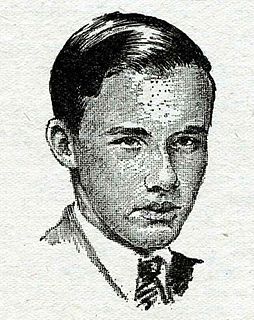
Peter Schuyler Miller was an American science fiction writer and critic.
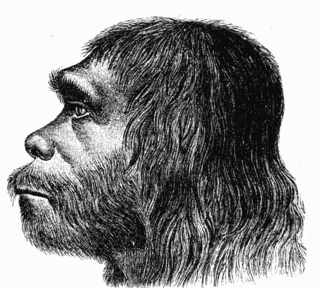
Neanderthals have been portrayed in popular culture since the early 20th century. Early depictions were based on notions of the proverbially crude, low-browed caveman; since the latter part of the 20th century, some depictions were modeled on more sympathetic reconstructions of life in the Middle Paleolithic era. In popular idiom, the word "Neanderthal" is sometimes used as an insult, to suggest that a person combines a deficiency in intelligence and a tendency to use brute force. It may also imply that the person is old-fashioned or attached to outdated ideas, much in the same way as the terms "dinosaur" or "Yahoo" are also used.

A Gun for Dinosaur and Other Imaginative Tales is a short story collection by American science fiction and fantasy author L. Sprague de Camp, first published in hardback by Doubleday in 1963, and in paperback by Curtis Books in 1969. The first British edition was issued by Remploy in 1974. It has also been translated into German.

The Wheels of If and Other Science Fiction is a 1948 collection of science fiction stories by L. Sprague de Camp, first published in hardback by Shasta and in paperback by Berkley Books in 1970. It has also been translated into German. All the stories were originally published in the magazines Astounding Science Fiction and Unknown.
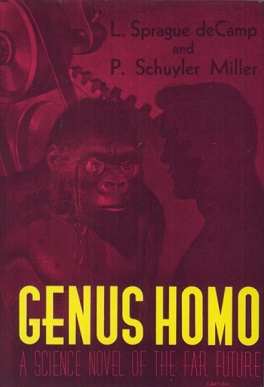
Genus Homo is a science fiction novel by American writers L. Sprague de Camp and P. Schuyler Miller. It was first published in the science fiction magazine Super Science Stories for March, 1941, and subsequently published in book form in hardcover by Fantasy Press in 1950 and in paperback by Berkley Books in 1961. An E-book edition was published by Gollancz's SF Gateway imprint on September 29, 2011 as part of a general release of de Camp's works in electronic form. It has also been translated into French, Italian and German.
Bibliography of science fiction, fantasy, historical fiction and nonfiction writer L. Sprague de Camp:
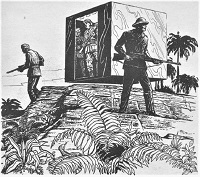
"A Gun for Dinosaur" is a time travel science fiction story by American writer L. Sprague de Camp as part of his Rivers of Time series. It tells the story of four men who travel into the past to hunt dinosaurs.
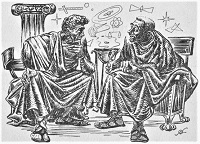
"Aristotle and the Gun" is a time travel and alternate history science fiction story by American writer L. Sprague de Camp.

"Judgment Day" is an apocalyptic science fiction story by American writer L. Sprague de Camp. It was first published in the magazine Astounding Science Fiction for August, 1955, and first appeared in book form in the anthology The Best Science Fiction Stories and Novels: 1956. It later appeared in the de Camp collections A Gun for Dinosaur and Other Imaginative Tales, and The Best of L. Sprague de Camp, as well as the anthologies Great Science-Fiction, A Science Fiction Argosy, and Masters of Darkness III. The story has also been translated into German.

"The Gnarly Man" is a science fiction story by American writer L. Sprague de Camp, about an apparently immortal Neanderthal Man surviving into the present day.

"Divide and Rule" is a science fiction novella by American writer L. Sprague de Camp. It was first published as a serial in the magazine Unknown from April to May, 1939 and first appeared in book form in de Camp's collection Divide and Rule. The story was revised for book publication. The first stand-alone book edition of the story was published as a large-print hardcover by Thorndike Press in September 2003. An E-book edition of the story was issued by Gollancz's SF Gateway imprint on September 29, 2011 as part of a general release of de Camp's works in electronic form.

"Living Fossil" is a science fiction story by American writer L. Sprague de Camp, on the concepts of human extinction and future evolution. It was first published in the magazine Astounding Science-Fiction for February 1939. It first appeared in book form in the anthology A Treasury of Science Fiction ; it later appeared in the anthologies Gates to Tomorrow, and The SFWA Grand Masters, Volume 1. The story has been translated into Danish, Swedish and Italian.

"The Blue Giraffe" is a science fiction story on the concept of mutation by American writer L. Sprague de Camp. It was first published in the magazine Astounding Science-Fiction for August, 1939. It first appeared in book form in the anthology Adventures in Time and Space ; it later appeared in the anthologies World of Wonder, The Science Fiction Bestiary, Androids, Time Machines and Blue Giraffes, Isaac Asimov Presents the Great Science Fiction Stories: Volume 1, 1939, Isaac Asimov Presents The Golden Years of Science Fiction, and An Anthropomorphic Century. The story has been translated into Italian, French and German.

"The Guided Man" is a classic science fiction short story by L. Sprague de Camp. It was first published in the magazine Startling Stories for October, 1952. It first appeared in book form in the collection A Gun for Dinosaur and Other Imaginative Tales. It has also appeared in Science Fiction Yearbook no. 3 and the collection The Best of L. Sprague de Camp. The story has been translated into German.
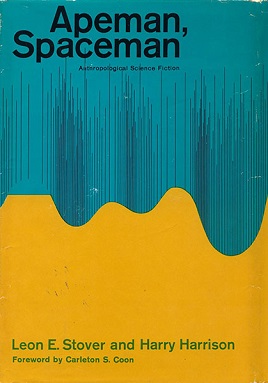
Apeman, Spaceman: Anthropological Science Fiction is an anthology of science fiction short stories edited by Harry Harrison and Leon E. Stover. It was first published in hardcover by Doubleday in June 1968, with a paperback edition following from Berkley Medallion in March 1970. The first British editions were issued in hardcover by Rapp & Whiting in October 1968 and in paperback by Penguin Books in November 1972. The book has been translated into German.
"The Egg" is a science fiction short story by L. Sprague de Camp. It was first published in the magazine Satellite Science Fiction for October, 1956. It first appeared in book form in the collection A Gun for Dinosaur and Other Imaginative Tales. The story has been translated into German.

"Let's Have Fun" is a science fiction short story by L. Sprague de Camp. It was first published in the magazine Science Fiction Quarterly for May, 1957. It first appeared in book form in the collection A Gun for Dinosaur and Other Imaginative Tales, and afterwards appeared in the anthology Rare Science Fiction. The story has been translated into German.

"In-Group" is a science fiction short story by L. Sprague de Camp. It was first published in the magazine Marvel Science Fiction for May, 1952. and later reprinted in the magazine Skyworlds for February 1978. It first appeared in book form in the collection A Gun for Dinosaur and Other Imaginative Tales. The story has been translated into Italian and German.
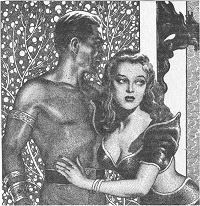
"Cornzan the Mighty" is a classic science fiction story by L. Sprague de Camp. It was first published under the variant title "Cornzan, the Mighty" in the magazine Future Science Fiction for December, 1955. All later appearances omit the comma. It first appeared in book form in the collection A Gun for Dinosaur and Other Imaginative Tales. The story has been translated into German.
